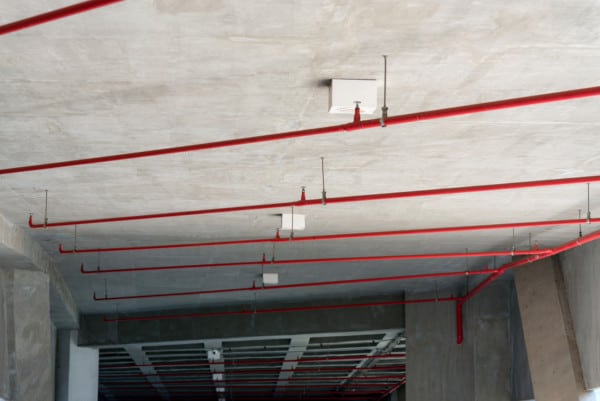The installation of fire sprinkler systems is critical in safeguarding buildings and occupants from the devastating effects of fires. The National Fire Protection Association (NFPA) has established numerous codes and standards to ensure the proper design and installation of these systems. One important aspect is the distance of upright sprinkler heads from the ceiling. In this article, we will explore the NFPA 13 guidelines for upright sprinkler head placement and the significance of adhering to these regulations.

Understanding NFPA 13 Guidelines
Ensuring Fire Safety
NFPA 13, titled “Standard for the Installation of Sprinkler Systems,” is a comprehensive standard that provides requirements for the design, installation, and maintenance of automatic fire sprinkler systems. It covers various types of sprinkler heads, including upright sprinklers, which are commonly used in many applications.
Types of Sprinkler Heads
An Overview
Before diving into the specific guidelines for upright sprinkler head distance from the ceiling, it’s essential to understand the different types of sprinkler heads:
- Upright Sprinkler Head: These sprinklers point upwards and are typically used in areas where obstructions might prevent the water spray from reaching the fire effectively.
- Pendant Sprinkler Head: Pendant sprinklers hang down from the ceiling and are commonly used in areas with unobstructed spaces.
- Sidewall Sprinkler Head: These are mounted on walls and used in areas where a ceiling-mounted sprinkler is not feasible.
Upright Sprinkler Head Distance from the Ceiling
The Guidelines
The NFPA 13 standard provides specific requirements for the distance between the deflector of an upright sprinkler head and the ceiling. These requirements are essential to ensure the proper operation of the sprinkler system in the event of a fire.
1. Minimum and Maximum Distances
The NFPA 13 standard stipulates that the minimum distance from the deflector of an upright sprinkler head to the ceiling should be no less than 1 inch (25 mm). On the other hand, the maximum distance should not exceed 12 inches (305 mm).
2. Importance of Consistency
Consistency in the installation of upright sprinkler heads is crucial. Maintaining uniform distances between the deflector and the ceiling helps ensure that the water distribution pattern is consistent, which is vital for effective fire control.
3. Adjustments for Specific Applications
While the general guidelines provide a solid framework, it’s important to note that specific applications or environments may necessitate variations in the sprinkler head distance from the ceiling. For instance, in areas with sloped ceilings, you might need to adjust the placement to ensure proper coverage.
Why These Guidelines Matter
Enhancing Fire Safety
The NFPA 13 guidelines for upright sprinkler head distance from the ceiling are not arbitrary; they are designed to enhance fire safety. Here’s why these regulations are important:
1. Efficient Water Distribution
Maintaining the appropriate distance ensures effective water distribution in the event of a fire. Too much distance can result in reduced water coverage, while too little distance can obstruct the water spray.
2. Adequate Cooling and Suppression
Properly positioned upright sprinkler heads help cool the surrounding air and suppress the fire, limiting its growth and spread.
3. Protection from Obstructions
In areas with potential obstructions, such as storage racks or equipment, the correct distance allows the water spray to clear these obstacles and reach the source of the fire.
4. Code Compliance
Adhering to NFPA 13 guidelines is essential for code compliance. Non-compliance can lead to legal and insurance issues in the event of a fire.
Conclusion
The NFPA 13 guidelines for upright sprinkler head distance from the ceiling are crucial for fire safety. Adhering to these regulations ensures an effective fire sprinkler system. Consult experienced professionals well-versed in NFPA standards for proper system design and installation, offering peace of mind for all stakeholders.